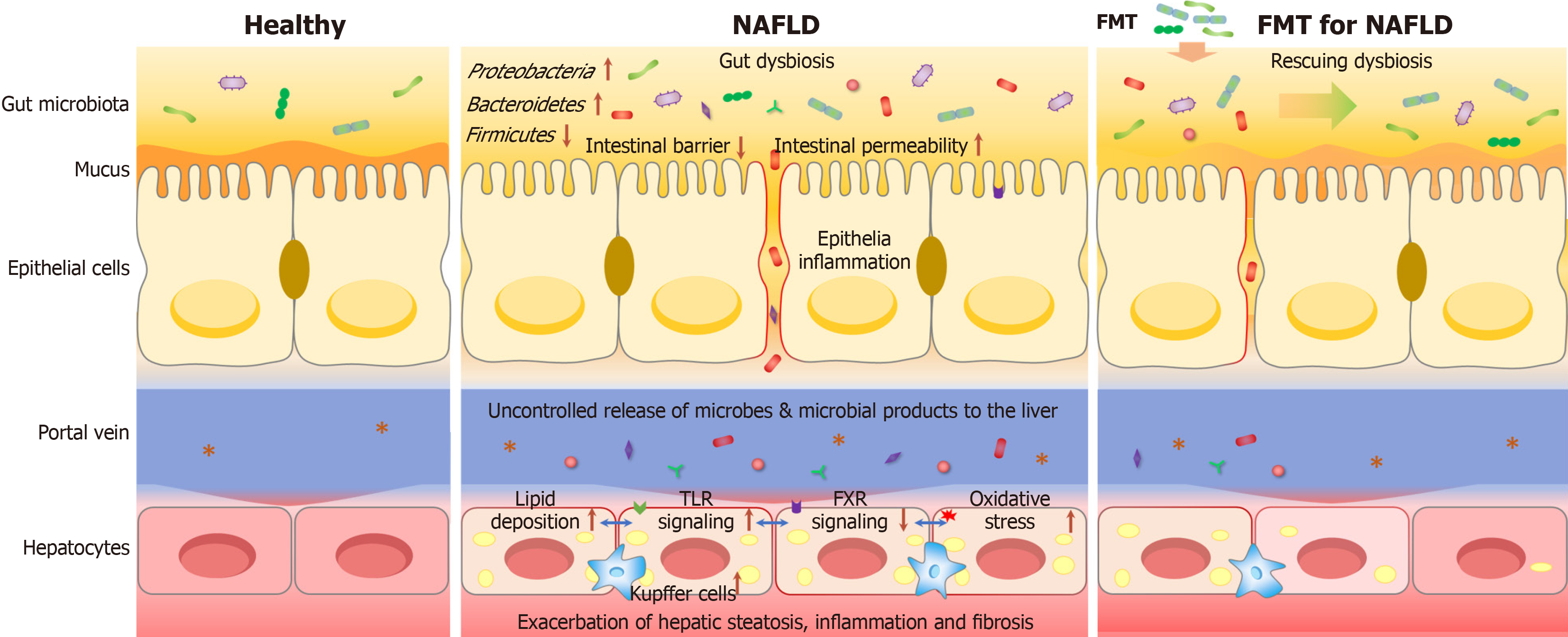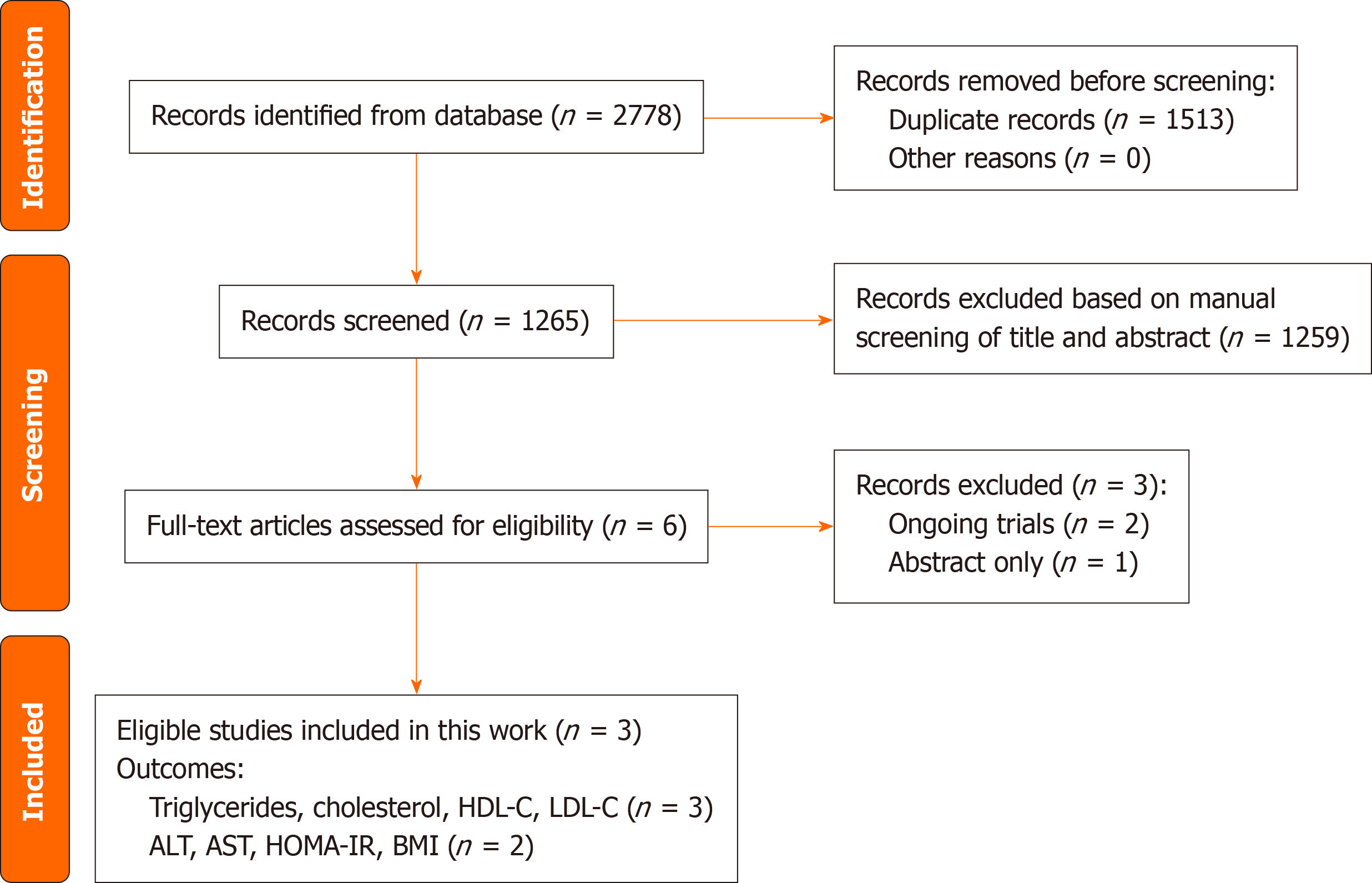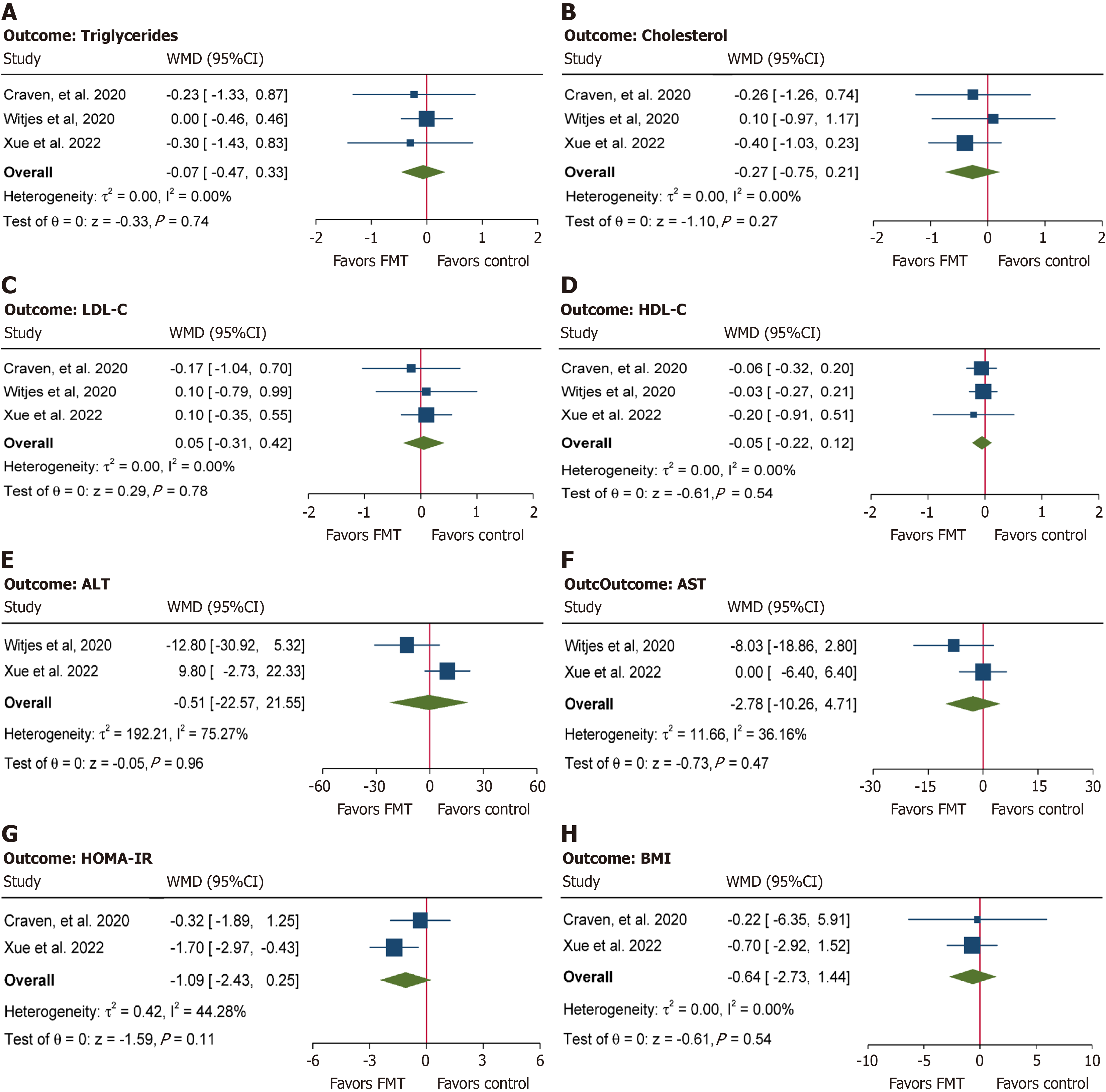Copyright
©The Author(s) 2024.
World J Gastroenterol. Feb 28, 2024; 30(8): 833-842
Published online Feb 28, 2024. doi: 10.3748/wjg.v30.i8.833
Published online Feb 28, 2024. doi: 10.3748/wjg.v30.i8.833
Figure 1 Homeostatic and disrupted gut-liver crosstalk, and mechanism of fecal microbiota transplantation for non-alcoholic fatty liver disease treatment.
Left: Healthy/homeostatic condition; Middle: In non-alcoholic fatty liver disease (NAFLD), the intestinal barrier can be disrupted, which facilitates the translocation of microbes and microbial metabolites to the liver, thus promoting hepatic steatosis, inflammation and fibrosis; Right: Fecal microbiota transplantation is used to recover microbial diversity and abundance and restore homeostatic gut-liver crosstalk, and consequently attenuate the symptoms of NAFLD; FMT: Fecal microbiota transplantation.
Figure 2 Flow diagram for the process of study selection.
ALT: Alanine aminotransferase; AST: Aspartate aminotransferase; BMI: Body mass index; HDL-C: High-density lipoprotein cholesterol; HOMA-IR: Homeostatic model assessment of insulin resistance; LDL-C: Low-density lipoprotein cholesterol.
Figure 3 Pooled analysis depicting the effects of fecal microbiota transplantation on serum triglycerides, cholesterol, low-density lipoprotein cholesterol, high-density lipoprotein cholesterol, alanine aminotransferase, aspartate aminotransferase, homeostatic model assessment of insulin resistance and body mass index measured by weighted mean difference in patients with non-alcoholic fatty liver disease.
A: Serum triglycerides; B: Cholesterol; C: Low-density lipoprotein cholesterol (LDL-C); D: High-density lipoprotein cholesterol (HDL-C); E: Alanine aminotransferase (ALT); F: Aspartate aminotransferase (AST); G: Homeostatic model assessment of insulin resistance (HOMA-IR); H: Body mass index (BMI). FMT: Fecal microbiota transplantation; NAFLD: Non-alcoholic fatty liver disease; WMD: Weighted mean difference.
- Citation: Qiu XX, Cheng SL, Liu YH, Li Y, Zhang R, Li NN, Li Z. Fecal microbiota transplantation for treatment of non-alcoholic fatty liver disease: Mechanism, clinical evidence, and prospect. World J Gastroenterol 2024; 30(8): 833-842
- URL: https://www.wjgnet.com/1007-9327/full/v30/i8/833.htm
- DOI: https://dx.doi.org/10.3748/wjg.v30.i8.833











